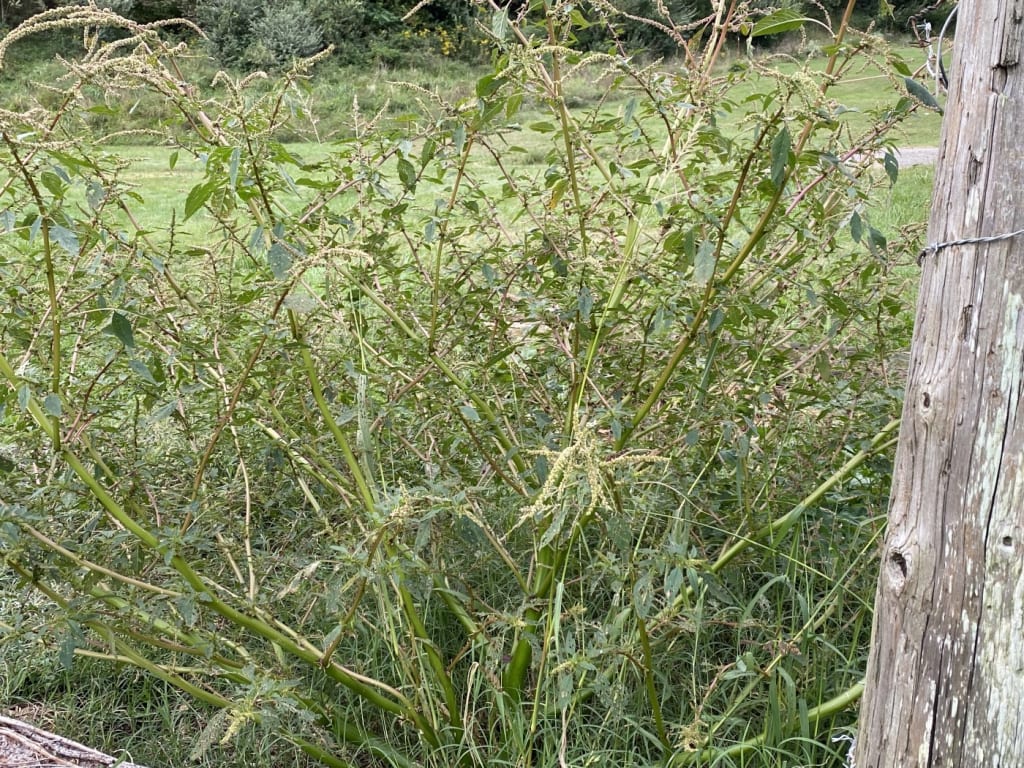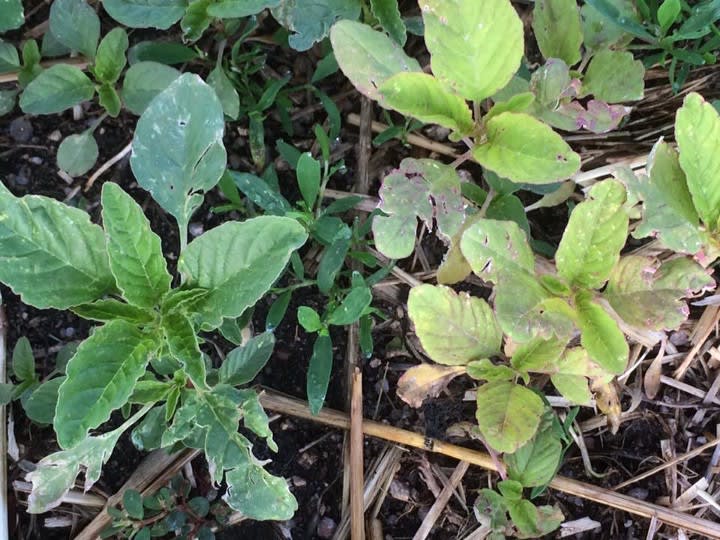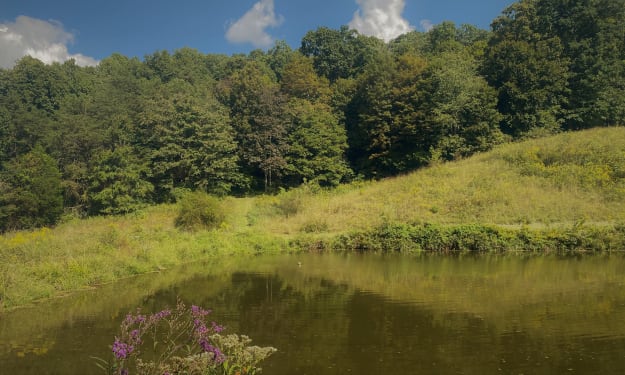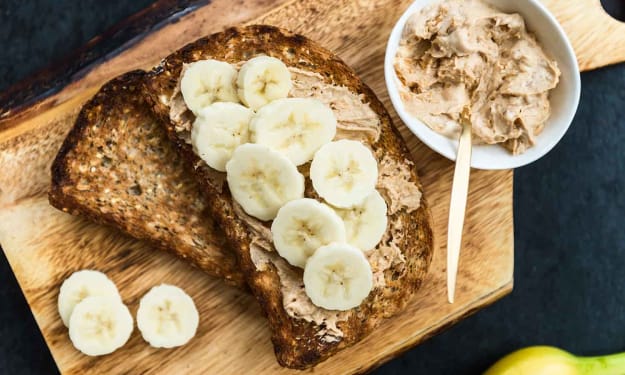Ep3: Homegrown Thanksgiving '23
Weed or Want

This is the fourth entry documenting our 14-month challenge to ourselves to prepare a Thanksgiving meal made entirely of food and ingredients grown, harvested, hunted and produced right here on Fain-XX Farm. Regardless of the outcome, subsequent entries, photos, recipes and social media posts will be arranged into a book format for publication.
* * *
Saturday, October 8, 2022
Is this just an unsightly weed, or a wanted surprise?
It sure doesn’t look pretty, and it has some nasty thorns, or spines I should say, but don’t pass judgment on this healthy specimen until you hear me out.
This is the spiny amaranth, and though this one is a monster of a volunteer and not the most attractive of its many cousins, amaranth is very much a wanted vegetation. The spiny amaranth gets its name from the needle-like spines at the base of its many branch forks. Though I need to take special care when harvesting from this plant (the spines hurt), like its many related cultivars, this amaranth produces thousands of tiny grain-like seeds that can be made into a gluten free flour, though the process takes some time. I still plan on getting some winter wheat and barley in the ground, but the amaranth could be our saving grace for baked goods during Homegrown Thanksgiving ‘23.

Amaranth is a native plant to the Americas and was once a staple food to the Incas, Mayans and Aztecs. It was cultivated by these ancient Americans for its leafy greens and its pseudo-cereal grains. Most of what I have read comparing ancient grains like amaranth with modern wheat and barley, puts modern grains on top for nutrition, but I can’t help but wonder how much of that is due to modern agriculture like genetic modification, hybridization, and selective breeding. Amaranth isn’t known as an ancient grain for no reason. It is basically the same today as it was 8000 years ago. While modern wheat might be higher in selenium, iron, zinc and other vitamins and minerals, Amaranth still brings those nutrients to the table and it’s lower in cholesterol, fat, and carbohydrates; it’s higher in calcium, and — it’s gluten free.
Surprise!
I thought I would have to wait until spring to sew amaranth and then the following fall to try harvesting the seed and milling it into flour. Identifying this volunteer this fall, gives me the opportunity to practice some techniques of harvesting the seed and determining how much amaranth it will take to make an adequate amount of flour. HT23 is intended to showcase our efforts to stock our own food store, but if we use up all our stock for one meal, it kind of defeats the purpose.
This challenge involves much learning for both of us, which is another reason why we aren’t trying to do HT23 this year. I was so excited about trying to make a tablespoon of amaranth flour, that I didn’t bother to research it first. I figured I would roast them, grind them to a powder and I would have it. Not so much. I threw a handful of the tiny seed into a hot, non-stick skillet and immediately, quite a few of them popped just like popcorn. I decided that was an interesting development, but not what I was going for, at the moment.

After successfully browning the popped and un-popped kernels — it was very quick — I threw them into the mortar and grinded them to a pale brown powder with the pestle. I tried a pinch and was satisfied with the nutty, slightly grassy taste though it was very gritty in texture. I added about a teaspoon of cream and mixed it into a grotesquely gray paste thinking I could pour the mix into the skillet and make a sort of unleavened cracker. What came about was more like a dollop of slightly scorched, gritty gravy that looked deplorable, but didn’t taste half bad… with the exception of the slight scorching.
That failure led me to research and now I feel much better prepared to use amaranth properly. Besides all the many other applications I can use this pseudo-cereal for — I’m sure I’ll share those in other episodes — I learned that the best way to make amaranth flour is to first sprout the grains. Not only does sprouting the grains make the seed much easier to mill, but it also releases some of the starch making more vitamins and minerals available and thus a healthier grain. The process does take the better part of a day, but it doesn’t take a chemistry degree. Basically, the process amounts to washing, draining, hanging, waiting, wetting, hanging, waiting, drying and milling. When I find more, wild amaranth, or next summer when I harvest my own, I’ll detail that process, but for now, I just want to discuss how harvesting the seed from the amaranth turns out to be quite a bit easier than I could have imagined.
I grew amaranth for several years in Colorado, and there is a wild cultivar that is common there, Palmer amaranth aka Palmer pigweed, but the end result in that high desert is underwhelming. I could just never get enough water on those plants for them to reach their full potential, and the scant few seed I could harvest from those diminutive plants hardly seemed worth my time. Interestingly, the Palmer amaranth, native to the Southwestern United States, did just fine. I should have harvested the seeds from the Palmer, but I never did.
* * *
There is actually a funny story related to my years trying to cultivate amaranth in Colorado. It’s best told by me when it happened, in this Facebook post:
July 3, 2016
For a couple of years now I’ve talked about the wonders of amaranth but until this year I hadn’t tried to cultivate it. I’ve seen pictures of a mature plant with the large seed bundles, but I had no idea what a young amaranth sprout even looked like.
I was trying to stay out of the rows, no weed pulling, until I could distinguish a neat row of something so I could know for sure it was amaranth. I was becoming more and more disheartened to see this invasive leafy weed that grows everywhere here taking over my amaranth rows.
But two days ago I noticed a faint and neat line of a lighter green. At last! Amaranth growing through the weeds! But why does this Love Lies Bleeding amaranth look identical to the weeds with the exception of the lighter green?
I had an epiphany! I have long suspected that a type of amaranth was the tall leafy weed with large seed heads that I often see growing in unattended fields around here but never took the time to identify. Today, after a few minutes on Google, I was able to identify the weed in my amaranth rows.
Behold! Glyphosate immune super weed, abhorred by farmers across the country, the bane of Monsanto and my new garden gem, Palmer Pigweed, aka Palmer Amaranth!
* * *
Identifying that large spiny amaranth in front of our barn confirmed for me that I can indeed grow some prolific amaranth cultivars here. The spiny amaranth certainly produced a lot of seed, and it was only an accident. I have access to heirloom amaranth seed that can develop into 7-foot-tall plants with dozens of feathers as long as my arm and each feather having hundreds, maybe thousands of seeds.

In Colorado, with such a short growing season, I would cut down the whole amaranth plant and shake each one upside down in a 5-gallon bucket to harvest a handful or two of seed. That process worked, though I lost the whole plant that way, and along with the seed at the bottom of the bucket, there was quite a bit of worthless chaff too. Upon discovering this spiny amaranth, I quickly found a way to collect the feathers before they discharged their seeds and, in the process, discovered an easier way to collect the tiny kernels. I held an empty Folgers can under the hanging feathers and snipped them off at the stem. Once the can was full of feathers, I looked in and saw that some of the seed had separated just from the feather being dropped into the can and was sticking to the inside of the plastic container due to static electricity. I put the lid on the can and gave it a vigorous shake. When I looked inside again, I could see a growing collection of seed at the bottom of the can. As it turned out, extracting the seed from the feathers was just that easy.
I doubt that when harvest time comes around next fall that I will be so inclined to walk around shaking a coffee can, but it has given me a new idea about how to use my old feed trough (mentioned in previous episode) and an antique screen door. The first step to using amaranth for our baking needs during Homegrown Thanksgiving is to discover an effective harvest technique that is economical to time and money and I think we have succeeded. Next will be to render the seed to a flour and though I don’t have enough seed to try that right now, I’m confident I can perfect the process rather easily when we have plenty of seed.

Amaranth flour has been my principle desired use for the tiny seeds, but with a large enough harvest, there are many other uses for this pseudo-cereal. I can even malt the seed in similar fashion to barley or wheat to make a gluten free beer. That will definitely be a recipe we will try.
Amaranth Flour Ginger Snaps
I expect amaranth will be mentioned in this series many more times before Homegrown Thanksgiving ’23, and there will be more recipes, but I don’t want to leave off this episode without trying something. We had to resort to store bought amaranth flour for this recipe, but the next time we make it, it will be with our own amaranth flour grown and milled right here on the farm.
Stay Tuned! Had to order amaranth flour online. Look for the recipe in a couple weeks when it comes in.
About the Creator
The Bantering Welshman
M.S. Humphreys is The Bantering Welshman, an East Tennessee native, author, journalist, storyteller, marketing specialist, husband and step father. https://www.instagram.com/thebanteringwelshman/ and http://www.banteringwelshman.com






Comments
There are no comments for this story
Be the first to respond and start the conversation.